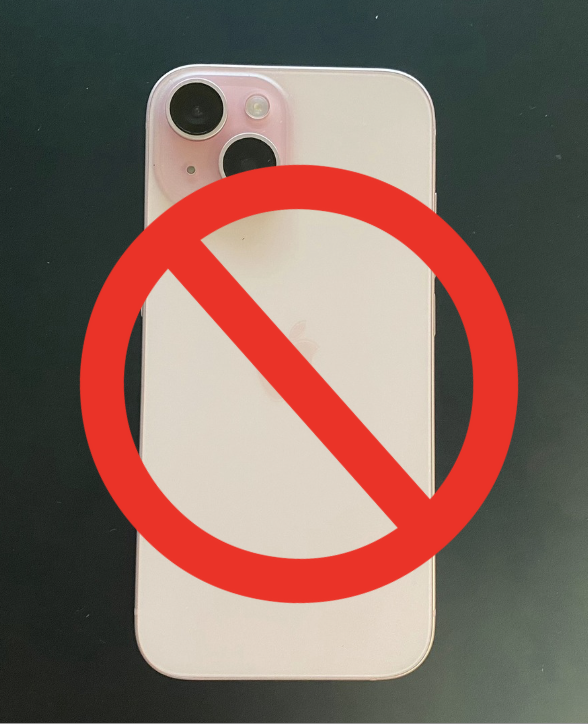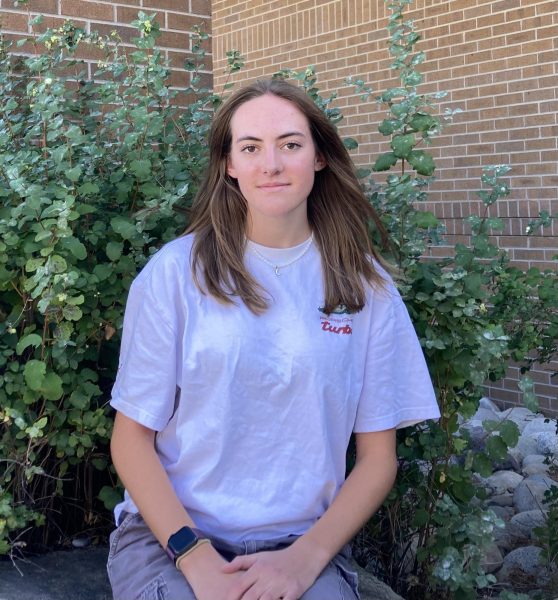This 2025-2026 school year, the Salida High School’s administration has implemented a new policy: the phone ban. Last year they began discussing this idea, hoping it would help test scores and attendance, and this year it’s happening.
To prepare the students and staff for how their future phone rules would go, in May of last year was a test week, to help people adjust when the official time came and to have them understand that this was going to be taken seriously.
This policy has been going over rather well in practice. Neither students nor parents have complained about it, and it’s improving lunch time social activity. Students are able to play volleyball in the gym and ping pong by the stairs to pass the time until the bell rings, juxtaposed with the quiet phone time formerly spent.
“I try to go into almost every single classroom almost every single day, and I have seen more engaged students, I don’t see the kid in the back who’s like obviously scrolling under the table. People seem engaged in class and it seems like it makes class more fun,” Assistant Principal Abigail Cooksey remarked.
If there is any difficulty at all, Cooksey says she does not want it to be a burden on the teachers— “Being a teacher is hard enough, I don’t want to make more work.” She goes on to say that to make this transition as easy as possible for the teachers, it’s an immediate confiscation of the phone. “ I don’t want staff members to feel like they have to navigate . . . and get into power struggles with students,” Cooksey said. “I want staff to know . . . that the rule is non-negotiable and it’s not their fault. I am fine with staff members blaming the board and blaming me . . . if there is gray area about it, I am the one who makes that call.
The Assistant Principal says she thinks this ban is preparing students for the work force as well, seeing as in a professional setting they would likely not get access to their phone, and would instead use the technology provided.
With the new schedule, bringing shorter classes and a longer lunch, Cooksey thinks this may have a helping hand in student’s focus in class and their compliance with the new policy. Each day one or two phones are collected, proving student’s yielding and acceptance of the rules implemented.
“Just seeing people’s faces in class . . . is a pretty positive change to the school environment,” Cooksey said. It’s clear that focus has improved and people are no longer glued to their phones, and though it’s early to tell how this will affect grades and attendance, it’s projected to be far improved.
Olivia Paysen, a sophomore at Salida High School, however, has a different opinion. “I don’t like it. I wish they would have enforced the past restrictions instead of jumping right into the ban because sometimes it’s really inconvenient.” One thing she does like, however, is being able to confidently walk beside someone without worrying if they’re listening to music instead of her.
“I love the phone ban because it also helps me stay off my phone during the school day and interact more with both teachers and students,” Katie Regan, an English teacher at Salida High School said.
“Sometimes it’s really convenient for students to take a picture of notes or the board, but now we can’t do that,” Regan said as a downside of the ban. She doesn’t know if the answer to this problem is an extreme ban, but “this definitely increases engagement.” Despite this, she still thinks this phone ban is more effective than the other schools or districts she’s seen.
“Kids talk to each other in a down minute, turning to their neighbor to talk instead of scrolling,” Regan noticed.
Overall, this phone ban has improved the disposition and focus of students. It’s taken well with both students and staff.


